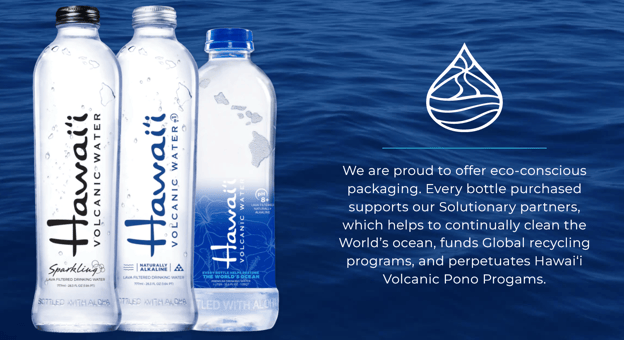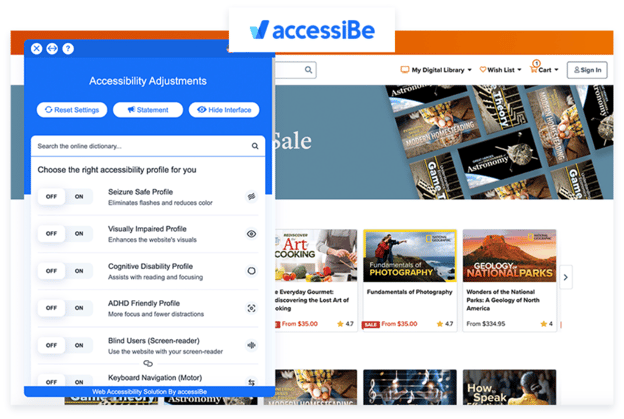Future of Ecommerce Web Dev: Sustainability and ADA Compliance
Sustainability and ADA compliance will play a major role in web development and ecommerce brand building from here on out.
Where convenience, security, and privacy still reign supreme on the list of consumer concerns, sustainability is a growing issue, especially for the younger generations that will dominate future ecommerce sales.
ADA compliance is another must-have for ecommerce websites. Brands know they need to be more inclusive to connect with the disability community and live up to the expectations of a more socially conscious world.
The question is this: How will retail sustainability trends and ADA accessibility shape the future of ecommerce? We explore sustainable ecommerce and look at how environmental and social issues will impact web development in the ecommerce space.
Why Ecommerce Sustainability and ADA Accessibility Matter
Sustainable ecommerce brands and ADA-compliant websites already have an edge over the competition. Here’s a deep dive into why both of these issues should be at the top of your priority list.
Why Your Business Can’t Ignore Sustainability
Ecommerce has always had a fatal flaw — shipping products to consumers is not environmentally friendly. It results in higher carbon emissions and more packaging waste.
Here’s a snapshot of the environmental impact of ecommerce today:
- Worldwide, carbon emissions from ecommerce logistics are expected to hit 25 million CO2 metric tons by 2030, which is a sizeable increase from the 19 million metric tons of CO2 released in 2019.
- In 2021, over four billion tons of returned items ended up in landfills in the United States.
- Plastic packaging used by ecommerce is also rising. Globally, the industry is expected to more than double its use of plastic from 2019 to 2025, growing from 2.1 to 4.5 billion pounds.
These and other environmental costs could push a lot of online consumers back to in-store shopping in the future if ecommerce retailers aren’t able to ensure a greener supply chain.
Research has shown that consumer engagement in sustainability increased during the pandemic, with nearly 60% of respondents to a 2020 survey saying they had changed their lifestyle to reduce their environmental impact.
Not only that, but generational shifts will make the environmentalism trend an even bigger priority in the future — younger generations, including Millennials and Gen Z are more interested in eco-friendly ecommerce than other generations.
One 2021 study found that 32% of Millennial shoppers say they have become more sustainable, compared to about 24% for all age groups. Also, 39% of Gen Z and 42% of Millennials are willing to pay more for sustainable products.
Ignoring this shift in consumer sentiment could lead to missed sales opportunities and a loss of consumer trust, which is why it’s critical for ecommerce brands to take steps to increase sustainability now.
Why Your Business Can’t Overlook ADA Compliance
While not as high-stakes as the quest to save the planet through consumer purchasing power, ADA compliance is just as vital for ecommerce brands.
The Americans with Disabilities Act (ADA) prohibits discrimination against people with disabilities, and this extends to the online shopping experience. The US court system has ruled that companies need to make websites accessible to all through reasonable accommodations in the same way a storefront has to ensure accessibility.
Unfortunately, most ecommerce websites haven’t mastered accessibility, which is one reason why there have been an increasing number of lawsuits in recent years. ADA lawsuits have increased by 320% since 2013, with many targeting small businesses that don’t realize they’re in violation. Ecommerce companies are being targeted as well. In 2020, over 2,500 lawsuits targeted websites and mobile apps that weren’t accessible to blind users.
Making your website accessible is not only a legal concern. It’s also about making your business inclusive and building trust with consumers.
A 2021 report by McKinsey found that two out of three American consumers use their social values to make shopping decisions, and one of the biggest sticking points of these more socially aware shoppers is inclusivity. Another study found that 64% of consumers say they are somewhat likely to make a purchase after seeing a diverse advertisement for a brand.
While people with disabilities are only one group that consumers want to see more inclusion of, being able to verify that your company has gone above and beyond to include everyone in every way possible can set your brand apart as forward-thinking and more socially conscious.
Which might be exactly what you need to stand out in your market in the future.
3 Socially Conscious and Sustainable Website Examples that Can Inspire Your Business
How do we know that ecommerce sustainability and inclusivity can drive more sales? Check out these sustainable ecommerce brands and see how their commitment to environmental and social responsibility is helping to drive their success.
Hawaii Volcanic Water
Our client, Hawaii Volcanic Water, has left no stone unturned when it comes to ensuring the brand and website align with consumer values and needs.

The water company uses geo-location-based fulfillment to reduce its carbon footprint. When we worked on their ecommerce platform, we ensured their system could streamline orders using two third-party logistics systems so all of their products take the shortest routes possible to consumers.
The company also uses eco-friendly packaging and works with hundreds of charitable organizations in Hawaii and beyond.
The Great Courses
When the web development team at Guidance helped The Great Courses migrate to Magento 2, they also helped the online learning company integrate AccessiBe’s website accessibility solution to offer a comparable user experience to website visitors who are visually impaired

AccessiBe is an AI-powered tool that facilitates accessibility adjustments like keyboard navigation and screen-reader optimization automatically. This allows The Great Courses to provide a more user-friendly experience to visually impaired customers.
Next Level Apparel
Clothing brand and Guidance client Next Level Apparel isn’t just a leading blank apparel company. It’s also a sustainability leader in the textile industry.
Next Level is a member of the Fair Labor Association (FLA) and produces its products in WRAP (Worldwide Responsibility Accredited Production) certified factories. To keep its customers in the loop, the company dedicates an entire page of its website to showcasing environmental and social certifications and initiatives.

After upgrading to Magento 2 Commerce Cloud (Adobe Commerce), Next Level Apparel can easily update its sustainability pages, communicating its latest accomplishments to customers.
How to Build Sustainable Ecommerce into Your Online Shopping Experience
Sustainable ecommerce is the future. So what can brands with a late start to environmentalism do to catch up?
Here are three steps your business can take now to foster a more eco-friendly ecommerce shopping experience:
- Offer pick-up options: Eco-conscious buyers might prefer to pick up their items themselves and skip the shipping altogether.
- Use carbon-neutral shipping: Programs like FedEx and UPS carbon-neutral shipping give customers peace of mind that the carrier is using the most eco-friendly shipping route possible.
- Stop using non-biodegradable packaging: Replace the plastic and foam with recyclable materials such as paper and cardboard.
How to Make Your Website ADA Compliant
Making your website more accessible will help you build relationships with more customers and stay compliant. If you’re new to ADA requirements, here are three things you can do now to make your site more accessible:
- Image alt tags: Your images should have descriptive alt tags to help users who are visually impaired understand the visual content on your site.
- Accessible navigation: Make sure every element on your website is operable with a keyboard. That way users who can’t operate a mouse can still shop on your site.
- Mobile compatibility: Verify that your ecommerce store is easy to use on all devices and screen sizes.
Learn more about ADA compliance for websites by checking the Web Content Accessibility Guidelines.
Raise the Bar for Your Ecommerce Website with Help From Guidance
Guidance is committed to being environmentally friendly and helping our clients become more sustainable with carbon-neutral hosting, annual sponsorship of eco-friendly events, and internal practices to reduce, reuse, and recycle. We can also help your business make your website more accessible and inclusive with integrations and customizations that help your customers have a better experience.
Not only that, but our website development team is phenomenal. We’ve been helping ecommerce brands offer world-class ecommerce experiences for close to three decades. Contact us today to learn more about how we can help you create a better future with sustainable and inclusive ecommerce.
